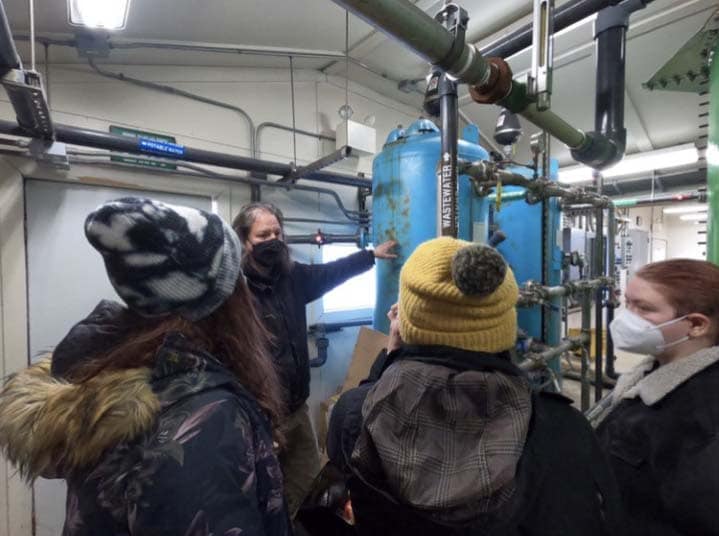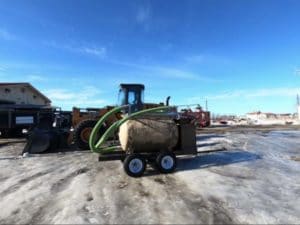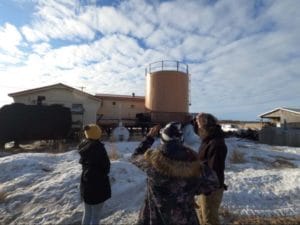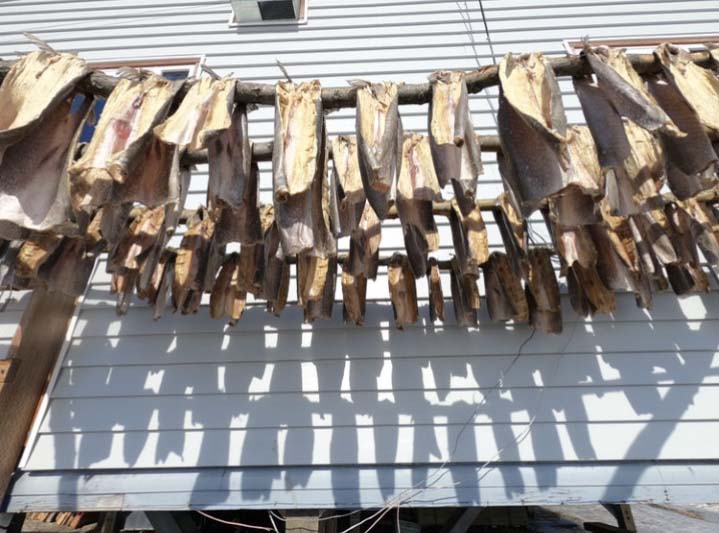
Joe Sarcone shows APU students the water treatment infrastructure at Zacharias John Williams School in Napaskiak.
In March, four environmental public health students from Alaska Pacific University (APU) traveled to the Native Village of Napaskiak in southwest Alaska, a traditional Yup’ik community just up the Kuskokwim River from Bethel.
Cultural practices and language are important to Napaskiak. Residents enjoy a subsistence way of life, hunting, fishing, and gathering with the seasons. The community opened a new school building in 2016 with murals of Elders in the hallways, where students speak only their Yungtan language through grade 3 and practice Yup’ik dance every Friday. The community recently revitalized Yup’ik singing, drumming, and dancing after a 70-year absence.
But like many rural villages, Napaskiak experiences significant public health challenges. The APU visit provided students in Anchorage the opportunity to experience those challenges in rural Alaska.
The visit was coordinated by Joe Sarcone, director of APU’s environmental public health program. Prior to joining APU, Sarcone worked alongside nearly 100 communities during his career with the Alaska Native Health Board, the Environmental Protection Agency, and Centers for Disease Control and Prevention. That career experience carries into his courses at APU. “Every class I teach has some component of sharing knowledge and work with rural Alaska, especially Alaska Native communities,” he said.
Sarcone coordinated the visit with his friend Joe Bavila, a lifelong Napaskiak resident who saw the value in welcoming APU students to his village. “When the students see this, they say ‘What can we do to make it better?,’” he said.

Napaskiak’s flush-and-haul system can serve one home at a time.
Napaskiak’s infrastructure issues include a lack of piped water and sewer, an open dump site, and water delivery and wastewater collection services. Toilets are connected to tanks that must be emptied one at a time into an open lagoon. That flush-and-haul service requires a fee, despite the community’s subsistence economy, and Bavila estimated only half the 110 homes in Napaskiak have a functioning system in place. The rest rely on five-gallon buckets lined with trash bags for human waste disposal. These health concerns exist in other villages too, Bavila said.
That makes Napaskiak a valuable experience for APU students as they prepare for their careers. The environmental public health degree trains students in water quality, air quality, waste management, and more, with a focus on bringing health solutions to rural Alaska. Classes include water resource management and epidemiology, and provide the skills to meet environmental health needs grounded in the realities of Alaska. Direct learning experiences are essential.
Napaskiak warmly welcomed the APU visitors, said Sarcone. APU students toured the water treatment plants and the dump site, met with Elders and Tribal administrators, participated in Yup’ik dance lessons at the school, and enjoyed a dinner of dried salmon at Bavila’s home. Sarcone will bring another group of four students this fall.

Four EPH students visited Napaskiak in the spring. Four more will visit in the fall.
Each visit provides a mutual benefit: students see the opportunity of a career in public health, while the village can share their experience with future health leaders.
“The value of this connection is unexplainable,” Bavila said. “These are the young people who are going to step up next and say, hey, remember Napaskiak?”
To learn more about the Environmental Public Health degree at APU, click here.
A version of this story also appeared in Tribal College Journal.

Pike dry outside a home in Napaskiak.
